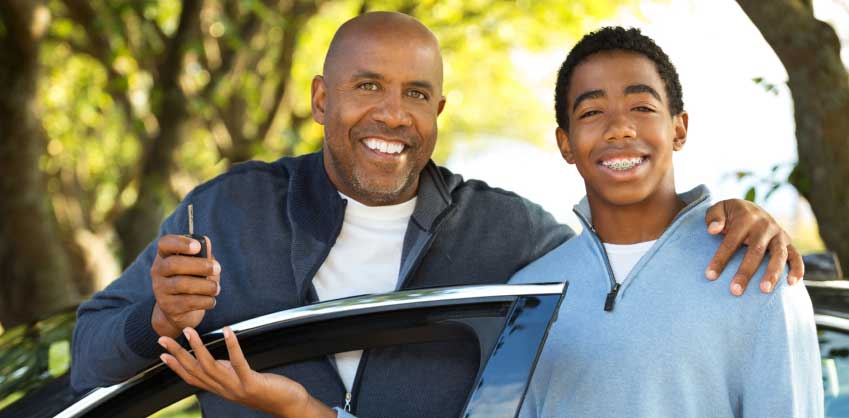Maryland Driver License
The RECOMMENDED Driving School Experience
How Elite Driving School and mentors work together to make safer drivers:
With Elite Driving School
With Mentor
1. Take 30 hours of classroom
2. Take learners permit test
3. One hour of practice with mentor driver
4. First Driving lesson with instructor. This lesson will cover basic maneuvers and light residential driving.
5. 20 hours of mentor driving
6. Second Driving lesson with instructor. This lesson will cover heavier traffic and different traffic patterns.
7. 20 hours of mentor driving
8. Third Driving lesson. This lesson will cover expressway driving, parallel parking and test maneuvers.
9. 20 hours of mentor driving
10. Take driving test

HOW TO ENSURE YOUR STUDENT IS A SAFE DRIVER AND PASSES THE DRIVING TEST
An experienced driver drives as if doing the math problem 2 + 2 = 4. That conditioned "automatic response" kicks in – no thought is required to get the action needed. But that conditioned "automatic response" needs to be learned – just as you learned your times tables in elementary school.
An inexperienced driver drives as if adding 143 + 86. Had to think about the answer? Didn't come as quickly as the 2 + 2 problem?
You help teach your student to drive "automatically" by taking them out to practice – to encounter and react to different situations correctly and quickly just like you drilled them with flash cards to learn the times tables.
Driving should be taught in stages – it's progressive – just like math. You wouldn't think of putting a 6 year old who can add 2 + 2 into an algebra class. You shouldn't put your driving student into a situation that's too advanced too soon!
Stage 1:
Parking lot: Identify and activate accessories – windshield wipers, defroster, horn, hazards, etc. Know where the accelerator and brake are located and how different speeds require different degrees of pressure to go or stop.
Neighborhood roads: turns, access intersections, check for hazards, where to stop, who goes first, pull to and from curb or into driveway.
Back roads: Important! How to maintain speed, negotiate curves, read and apply what warning signs say. (Students who do not drive back roads have more trouble maintaining speed and getting the fundamentals into the automatic response because the cars around them act as a crutch. Therefore the student has to think about what he's doing with the car as well as what is happening around him and it becomes overwhelming.)
Stage 2:
Moderate to Heavy traffic: Watch out for other traffic as they cut you off, run red lights, disregard traffic control devices. Negotiate more complex intersections: left arrows and lanes, yields, multi-lanes.
Stage 3:
High speed traffic: Merging in and out of traffic is much more important than driving fast.
Practice for the Test: Practice as soon as possible after the student learns from the instructor
Preparing for the Test:
Download "Parking Instructions" from drivingschool.net (Gives one way of parking) and "How to Prepare for Your Maryland Noncommercial Class C Driver's License". (Gives an overview of what to expect when taking the test.)
PRACTICE AS SOON AS POSSIBLE and allow enough time between the last lesson and the test appointment so that your student can practice parallel parking and the reverse two point turn until it is automatic. The instructor will make sure the student uses signals, head and mirror checks and show him references to make the maneuvers easier.
Go up to MVA site to survey the area. Watch some people take the test.
Use water filled gallon jugs with sticks or broom handles as substitute for cones.
Take with you: Learner's permit, Log book with certification page signed, mentor's license, insurance and registration cards.


